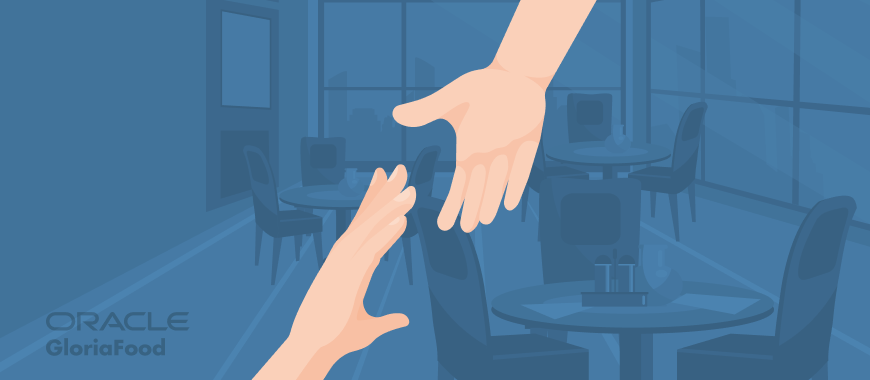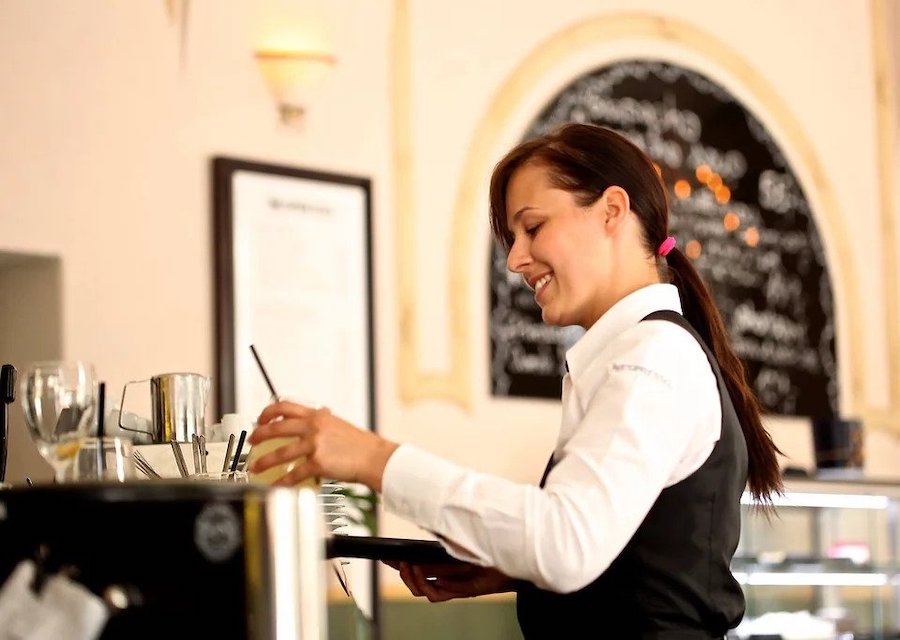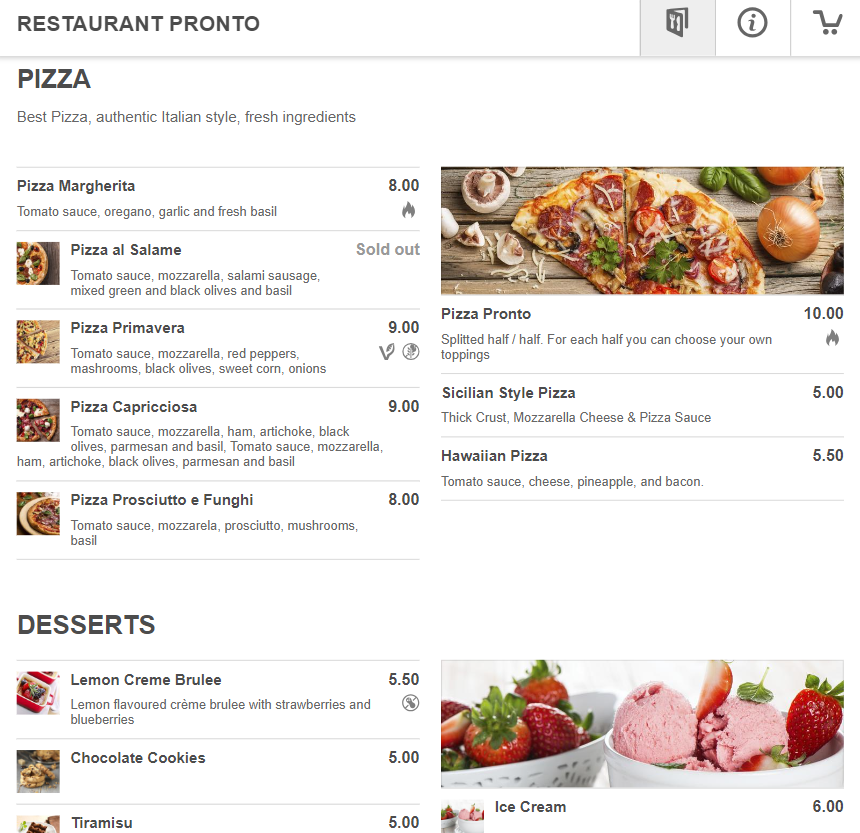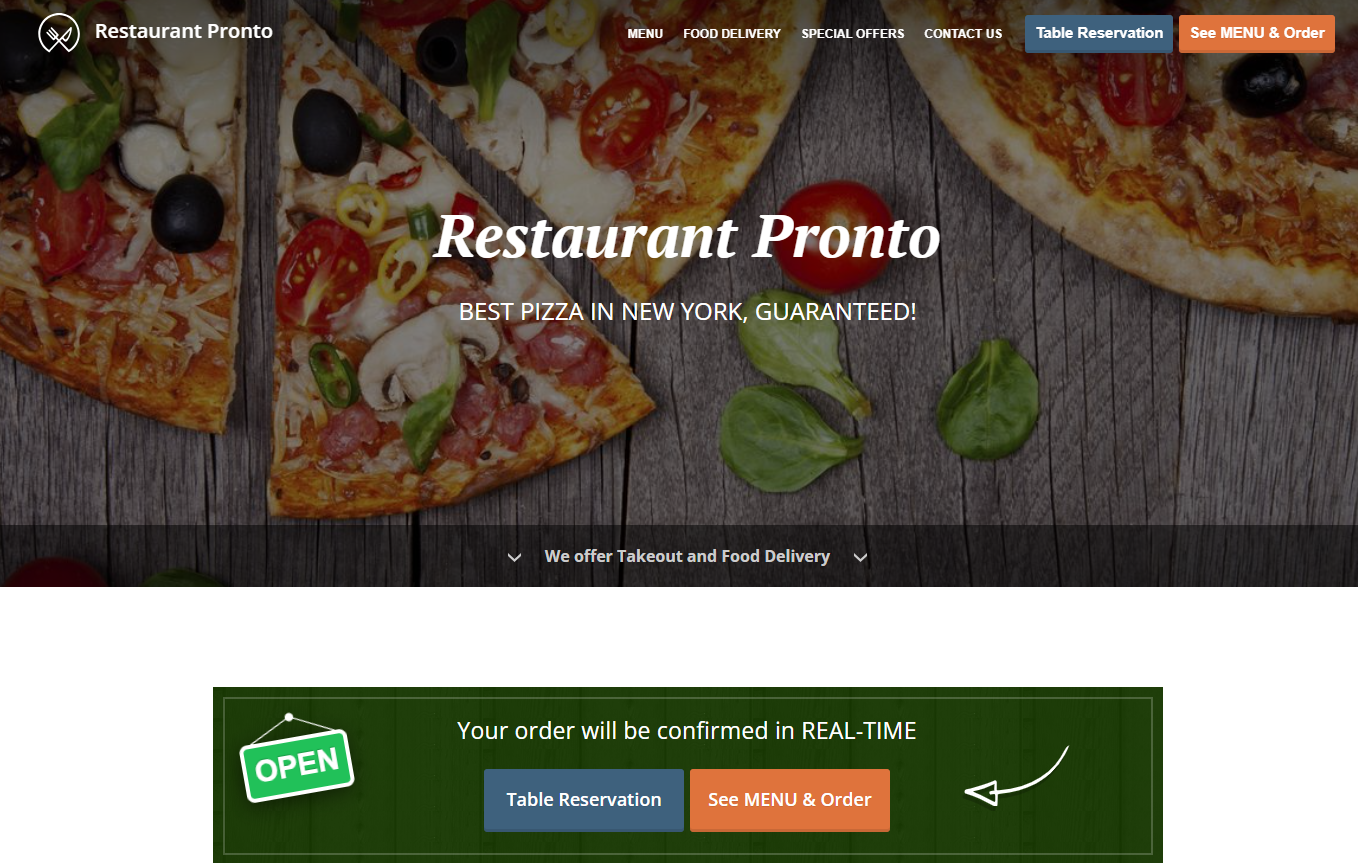Running a restaurant is no easy task because you must constantly find ways to attract more customers while still turning a profit. Add to that the fear of having a dying restaurant on your hands, and you might lose your mind trying to juggle all these responsibilities.
Below, we teach you how to read the signs a restaurant is failing. Then, we show you how to save a failing restaurant by looking at the key success factors of a restaurant and devising a restaurant rescue plan.
- 1.Why Do Restaurants Fail?
- Bad location
- Lack of experience
- Hiring the wrong people
- Bad staff management
- Subpar food quality
- Bad customer service
- Not enough starting capital
- Lack of a clear vision
- No marketing
- Lack of menu planning and proper pricing
- 2.How to Save a Failing Restaurant
- Spruce up your menu
- Consider adjusting your opening hours
- Use a table booking system
- Organize special events
- Build a relationship with repeat customers
- Analyze your finances
- Go through customer reviews
- Offer online delivery
- Rightsize your staff
- Use social media
- Bring in a consultant
- Consider refinancing
- Decide whether the concept is worth the effort
Restaurant Failure Rate Statistics
According to a new restaurant failure rate study by Ohio University, 60% of restaurants close their doors in their first year. But what makes this percentage of restaurants that fail so high? Why do restaurants fail in the first year? Most often than not, it’s all about the wrong location, but that’s not everything, so keep reading to find out more.
Add to that 60 % of restaurants that fail sometime between their second and fifth year, and the percentage increases. Here’s what percentage of restaurants fail within five years of opening: a whopping 80%.
And since so many restaurants fail, what is the average lifespan of a restaurant? Sadly, the answer is 4.5 years. Learning how to succeed in the restaurant business may take some trial and error. Let’s take a look at the first signs a restaurant is in trouble and how to revitalize a restaurant that’s on the brink of collapse.
Why Do Restaurants Fail?
We want to help you reach restaurant success by presenting the most common causes and symptoms of the “failing restaurant syndrome.”
First, here are the 3 top reasons why restaurants fail:
- Bad location
- Lack of experience
- Hiring the wrong people
Below, we tell you more about each of them, as well as other causes of failing restaurants. We base a lot of these reasons on Cornell’s “Why Restaurants Fail” study.
1. Bad location
Location is everything when it comes to opening a restaurant. You need to make sure it aligns with your restaurant concept. For example, if your target audience is millennials, choosing a location in a neighborhood where the average age is 50 is, clearly, a big no-no.
Other issues with location involve:
- Not a lot of foot traffic;
- Poor visibility;
- Expensive rent;
- Many competitors in the area.
Is your restaurant building easy to access? Do you offer parking? These are questions you must answer after you’ve established your target clientele to learn how to overcome a bad location.
Read more: Restaurant Location Analysis: How to Choose the Best Restaurant Location
2. Lack of experience
This goes for everybody but is particularly relevant for the owner who might work hard but who doesn’t have the expertise required to own and manage a restaurant. Not everybody can be a restaurant owner.
This lack of experience and skills reflects the worst in accounting. As a restaurant owner, you need to be aware of restaurant accounting procedures to be able to tell that everything is working smoothly.
Just a simple mistake of not updating the figures every time they change can lead to a restaurant’s downfall because you won’t get an accurate cost. Remember that if you want to bring in someone with experience to save your restaurant, this will cost you good money.
Read more: 10 Common Mistakes Restaurant Owners Make & How to Avoid Them
3. Hiring the wrong people
From a lack of skills to a bad attitude, your staff’s behavior will reflect poorly on your restaurant. When you hire people, those with degrees in hospitality should be your priority. You should also look at soft skills and offer them something more than just money.
Employees nowadays appreciate flexibility, the possibility of learning on the job, attending seminars, and so on. That will motivate them more than money ever could.
Read more: Restaurant Staff Hiring: How to Recruit & Onboard New Employees
4. Bad staff management
The best managers are the people who have been in their employees’ shoes at some point in their lives. If you plan on managing the restaurant yourself, you need to be aware of the fact that you will be managing people with different skills, which requires extensive experience. A lot of restaurant failure stories start with bad management.
You might also like: The 13 Worst Restaurant Problems and Solutions to Each of Them
5. Subpar food quality
This is an apparent reason since food is the heart of your restaurant. There are many reasons why the food might not be the best, such as:
- Not hiring the right cooks and kitchen staff;
- Cooking a dish so often that you’re just going through the motions and not paying attention to all the steps that made the recipe great in the first place;
Always keep track of the quality of your dishes and taste them often to make sure they’re still good.
6. Bad customer service
People expect a spotless restaurant customer experience, especially now that they can vent online. The first impression is everything because you need to get good reviews.
Nowadays, you can’t afford a trial period to find your style and voice. The experience has to be right from the very beginning, which puts a lot of pressure on restaurant owners.
Read more: 10 Restaurant Customer Service Skills to Hone for Business Success
7. Not enough starting capital
Your starting capital and how you choose to use it can make or break a business. A lot of restaurant owners make the mistake of spending all their money on a fancy location. Remember that you’ll have other costs as well when starting a restaurant, such as equipment, food, renovations, lease, employees, marketing, etc.
The average restaurant start-up cost is $375,500. This sum should include a safety net you can use until your business takes off. You can also look into sba loan eligibility criteria, as they can provide the capital you need to run your restaurant.
8. Lack of a clear vision
Having a fancy menu and an overall restaurant idea is not enough. Restaurants shouldn’t lack a written mission statement to be at the center of the business and to inspire both the staff and customer service.
Why do you want to open a restaurant? Because you want to get rich is not enough. Your mission statement should rely on emotions, sensations, and memories to create a story that will attract customers. An Italian restaurant, for example, could serve traditional food because it wants to transport customers to old Italy and guarantee an authentic experience for people who miss the country.
Read more: How to Write a Restaurant Concept: Complete Easy-to-follow Guide + Examples
9. No marketing
Another one of the signs of a failing restaurant is lack of marketing. Here’s a piece of restaurant advice: even if your brand is famous, you still need advertising. Just look at huge franchises like McDonald’s and KFC.
Especially if you own a small family restaurant, you need to get the word out there and separate yourself from the competition. Establish a marketing budget from the very beginning, and if you can afford it, hire a marketing specialist.
10. Lack of menu planning and proper pricing
Around one-third of your restaurant’s revenue should be allocated to the cost of goods sold. When you set the price for each dish, you need to cover all the expenses and cut a profit. Keep in mind that the average restaurant profit margin is around 6%.
Related: How to Calculate and Boost Your Restaurant Profit Margin
To make sure you don’t lose money, calculate your ideal food cost percentage, look at your prices, and re-price dishes that don’t bring in money. Also, avoid food waste by using the same ingredients for multiple dishes.
How to Save a Failing Restaurant
Now that you know what to look for in a failing restaurant, you might say, “My restaurant is failing. What do I do?” Here’s how to save a restaurant from closing by using these 13 restaurant turnaround strategies.
1. Spruce up your menu
Striking a perfect balance with a menu is not easy. You don’t want to be too niche because you’re going to alienate people, but you don’t want to sell a little bit of everything either. Restaurants that offer pizza, tacos, sushi, and so on, all at once, are not well regarded by customers.
To create a no-fail menu, find the thing that works best for you (your most popular dishes) and stick to it. Make sure the menu features accurate prices and has no spelling mistakes, and consider hiring a professional photographer to take better pictures of your dishes.
We have a simple menu builder that will help you create an irresistible online restaurant menu, in just a few minutes. Try it for yourself:
Read more: Restaurant Menu Planning: How to Optimize Your Menu to Sell More
2. Consider adjusting your opening hours
Have you ever wondered how to get more customers in your restaurant? One of the easiest to implement tips on how to save a failing restaurant is to tinker with your opening hours.
You want to be open when customers are most likely to visit you. If you open at noon, consider opening earlier and serving breakfast options as well. Or open earlier on weekends and come up with some brunch specials.
3. Use a table booking system
Table reservation systems that allow customers to book a table and order in advance can help you serve more clients every day and increase profits. Implement this, especially if you notice people leaving because of how long they had to wait.
4. Organize special events
Here’s how to bring more business to your restaurant: organize interesting events and celebrations. Taco Tuesday or discounts on drinks every Friday will persuade people to order more and become repeat customers. One of the main reasons why restaurants are successful is because they think outside the box when it comes to attracting customers.
Read more: 15 Restaurant Event Ideas to Get Customers Through the Door
5. Build a relationship with repeat customers
Here’s a piece of advice on how to turn a restaurant around: let customers know you remember them and appreciate their loyalty. How? By sending over a free drink or dessert now and then. What they say about you on social media is extremely important, so give them a reason to praise you.
Read more: How to Increase Customer Loyalty in a Restaurant
6. Analyze your finances
Learning how to manage a restaurant’s finances is a complicated and winding road. Where does most of your money go? Are you spending too much and earning too little?
Getting perspective over your spendings can help you realize where you need to cut costs and how you can redistribute funds to survive. If you use a business intelligence reporting tool, this is the moment to actually pull that data.
Most importantly, look at how much you’re spending on food versus how much you’re charging for it. You need to be left with a healthy margin to thrive. If you don’t, try to negotiate the cost or look for a different supplier. You can’t learn how to save a failing restaurant if you’re not willing to make compromises.
Read more: Restaurant Finance Management: 10 Useful Tips to Lower Costs
7. Go through customer reviews
If your restaurant has a bad reputation, it’s probably due to online reviews, so staying on top of them is crucial. If you get a lot of bad customer service stories about your restaurant, find out what the issue is and tackle it ASAP. Don’t forget to reply to customer reviews and try to solve their problems to make it clear to them and other customers that you take their experience seriously.
Read more: How to Respond to Negative Restaurant Reviews to Increase Brand Loyalty
8. Offer online delivery
One of the key elements of a successful restaurant is its ability to keep up with technological changes. If you don’t offer online ordering and delivery yet, it’s time to do it because it will skyrocket your profits. Plus, with a service like GloriaFood, it won’t cost you a dime.
9. Rightsize your staff
You shouldn’t pay people for waiting around for a customer to enter the restaurant. If you have more servers than customers, cut costs by hiring just the right number. Alternatively, employ temporary staff that can help you out when the restaurant is particularly busy.
Read more: 10 Restaurant Staffing Issues and How to Address Them
10. Use social media
Apart from having a presence on all major social media networks (Facebook, Instagram, Twitter), keep your profile active by posting about your specials and promotions, or sharing relevant news from the industry. Also, consider advertising on Facebook and Instagram to get more visibility.
Remember to claim your restaurant on Google Business Profile and platforms like Yelp and TripAdvisor. Online exposure is something you should strive for when advertising your restaurant.
Learn more about how to succeed on these platforms:
- Top Benefits of Google Business Profile for Restaurants
- Complete Guide to Yelp Restaurant Marketing: How to Get Ahead of the Competition
- TripAdvisor for Restaurants Guide: Part 1, Part 2, Part 3
11. Bring in a consultant
If opening a restaurant was your dream, you might be too close to the business to realize what’s not working. A specialist is the most qualified person to teach you how to save a failing restaurant, but this is a costly solution. However, don’t rely on your family and friends’ advice instead. They’re most likely not qualified, and they might also try to sugarcoat their answer so as not to hurt your feelings.
12. Consider refinancing
If you aren’t making enough money and your restaurant is struggling, you can go to a funding institution or a bank to ask for more. However, getting one is far from easy, so think long and hard if you want to continue with this restaurant idea before you do it.
13. Decide whether the concept is worth the effort
Sometimes, it’s better just to call it quits, cut your losses, and learn how to start a restaurant from scratch. Start with a brand new idea rather than investing money into something that simply won’t work no matter how hard you try.
We know changing your restaurant concept isn’t easy, especially if you’ve poured your heart and soul into it. However, it’s better than fooling yourself. Ask yourself, “What is my restaurant worth?” If you can’t find a good reason to keep it open, brainstorm some other potentially successful restaurant concepts and give the winning idea a shot.
Don’t forget to make a list of what you need to open up a restaurant before you start the process so you minimize the chances of being caught unprepared.
Read more: Restaurant Opening Checklist: How to Start a Profitable Restaurant
Conclusion
Even though the success rate of restaurants can be discouraging, if owning a restaurant is your dream, don’t give up and implement these tips on how to save a failing restaurant.
Borrow from these key success factors in the foodservice industry to learn how to run a restaurant successfully, boost profits, and grow a profitable business. Do you have other tips on how to save a failing restaurant that we didn’t discuss? Get in touch!








